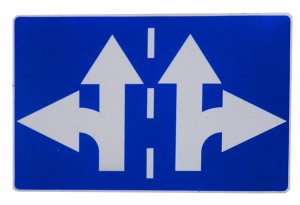I get a lot of phone calls about turn signal tickets. The complaint I hear from people is that the police stopped them and gave
them a turn signal ticket – even though they used their turn signal!
Unfortunately, Oregon law is a bit tricky about those signals. You have to use them at the right time and in the right place.
When do You Have to Use Your Signal to Avoid a Turn Signal Ticket?
There are actually three statutes that control when you have to use your turn signal in a car or truck (there’s another one for turns on bikes and another for turns on motor assisted scooters. Turning is a big deal in Oregon.
Turning Left or Right: ORS 811.335 will earn you a turn signal ticket if you don’t use your signal on a highway before turning the vehicle left or right when the movement can’t be done with safety OR you signal for less than 100 feet traveled.
The 100 foot requirement is very strict.
In State v. Bea, 318 Or 220 (1993), the Oregon Supreme Court held that the 100 foot requirement applies even where the turn made is the only available option. In Bea, the car turned at an L-shaped intersection without signaling. Even though the car had to turn, it was a traffic violation to not signal 100 feet beforehand.
In State v. Arthur, 158 Or App 62 (1999), the Court of Appeals held that the 100-foot requirement applies even if there is an intervening stop – i.e. you can’t turn your signal on at the stop sign. It even applies, the court said, if you pull onto a highway and immediately make another turn where it is impossible to drive 100 feet. The court said you might have an impossibility defense but it would still technically be a violation of the statute.
Changing Lanes: ORS 811.375 will earn you a turn signal ticket if you don’t use your signal before “changing lanes by moving right or left upon the highway” when the movement can’t be done with safety OR you signal for less than 100 feet traveled.
The 100 foot requirement can be tricky. At 60 mph, that’s 1.14 seconds of signal. At 30 mph, 2.28 seconds of signal. Crawling in traffic at 5 mph, that’s 13.68 seconds of signal before changing lane.
The same strictness about the 100-foot requirement probably applies here, too.
In a Roundabout: ORS 811.400 will you earn you a turn signal ticket if you don’t use a signal before changing lanes or to exit “from any position within a roundabout.” Oddly, this violation is a Class B traffic violation (the second-most serious type) whereas the other two are Class D violations (the least serious).
What Can You do to Avoid a Turn Signal Ticket?
Signal, Signal, Signal. Signal before changing lanes, turning at corners, in a roundabout and entering the road.
Signal early, Signal often. 100 feet can be further than you think. Put your signal on well before you plan to make your move. If you spot a police car nearby, make a note of where you put the signal on. I’ve seen people win their cases by testifying that the saw the police car, made a special note of it and made a special note of where they turned on the signal.
Signal each move. It’s not part of the statute that you have to signal each lane change separately – just that you have to signal for 100 feet before moving left or right – but most police officers interpret it that way and some will give you a ticket for each lane change that wasn’t properly signaled. You might be able to beat it in court… but why run the risk of picking up the ticket?
Signal even if you’re not sure that you’re going to turn. You can’t be dinged for having your signal on and changing your mind.
What Should You do if You Get a Turn Signal Ticket?
Did you get a turn signal ticket? Your best bet for keeping it off your driving record is working with an experienced traffic ticket attorney, like me. Contact me for a confidential consultation.